Strength Training “Master Tip” (Works On Every Lift)
Today, Gronk Fitness will let you in on a secret…a “master tip” if you will, that can be applied to literally every exercise to increase your maximum strength and reduce your chance for injury.
Especially if you are stuck in a strength plateau for quite some time or if you are having trouble performing heavy, compound movements (such as squats and deadlifts) without lower back or hip pain, this tip can be the answer you are looking for.
The Problem: Energy Leaks
Energy leaks is a fancy term coined by strongmen and powerlifters and it refers to a lack of body tightness when performing any lift. In layman's terms, if your body is not tight enough before any heavy repetition, energy that could have potentially been allocated towards moving that weight, simply gets wasted, almost oozing out away from your body; hence an energy leak.
Energy leaks are very apparent when executing movements such as the Pull-Up or the Hanging Leg Raise because your body will keep swinging back and forth instead of going through the actual range of motion of the movement. This is a serious problem because it takes away from the exercise you’re doing AND because it increases your chance of injury.
While it’s quite obvious on exercises like Pull-Ups or Dips, it’s far less obvious while squatting or deadlifting, and it’s far more detrimental. The heavier an exercise becomes, the more unstable your body becomes and if you don’t know how to balance the instability, you’re not only losing power but you’re also inviting an injury to happen.
The Solution: Proper Breathing
Proper breathing is crucial to make sure your body is one tight unit before and during every repetition.
Although the following can be applied to any exercise, it’s much more beneficial on exercises that you’re lifting the most amount of weight. That would be squats, deadlifts, bent-over rows, bench presses, overhead press, weighted pull-ups, etc..
Some people tend to advise you to hold your breath during every rep. Other people will advise you to exhale on the positive and inhale on the negative. Both of these approaches are completely and utterly wrong and plain dangerous.
Here’s what you need to be doing:
- Properly set your body up before the first repetition
- Take in a big breath with your belly (not your chest)
- Hold that breath for the duration of the entire repetition
- Exhale as soon as the rep is finished and not a second sooner
- Reset your body and your breath and proceed with the next repetition.
This is the only correct way to breathe during your sets and it’s something that you should implement to your training at once, if you haven’t already.
If you tend to hold your breath during a set, this can raise your blood pressure, lower your strength and even cause a stroke or a heart attack. In some minor cases, blood vessels burst which is why you see people with red eyes or burst veins in their legs or arms.
If you tend to exhale in the concentric (positive) and inhale in the eccentric (negative), what you’re doing is definitely not optimal for one main reason; as you exhale while lifting the weight, you are losing core tightness, causing your entire core to collapse under the weight, causing you to fail the repetition or worse, acquire a serious injury.
Proper Technique Revised
Summing up, the correct way to master every lift is to always inhale BEFORE every repetition, maintain that breath in your core while the weight is moving and then let go of the breath between reps. As a bonus, you should always aim to squeeze every muscle in your body, especially your glutes and quads, as they are your foundation for every lift and they will help balance your body, resulting in less energy leaks and more energy output.
If you’ve found this blog post useful, share it with your friends and fellow athletes on your social media.
But before you get ready to apply this master tip to your next training session at home or at the gym, always remember to…get your mind right.




Leave a comment